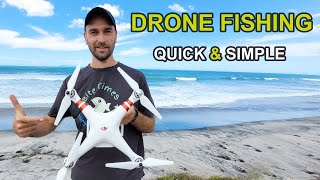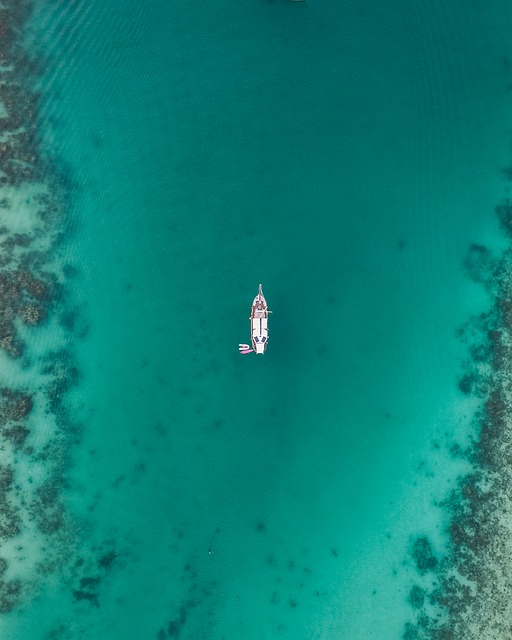
We will be looking at the basics and how to use a drone fishing rig. We will also discuss what to look out for when selecting your drone, battery life and payload. Then we'll show you how to get more out of your drone. For more tips and tricks, read on. Soon you will have the drone of dreams! Let's get !... going and maybe even catch a few more fish!
Basic drone fishing rig
The first thing you will need to drone fish is a set of hooks. The fishing line should have a doubled length and be either mono or braided. It should be tied with a Cat's Paw Loop, Uni knot or Uni knot. You will also need a sinker (2-8 oz) and hooks (to attach to each section of the backbone). Finally, attach the lead loop of your snap swivel to your drone.
There are many methods to make a fishing helicopter. A basic one involves attaching a hook to the landing gear of the drone and spinning it until the line releases. A dropper to keep your fishing line under the drone is another option. A dropper is a device that allows you to keep your main line above the drone and avoid it becoming tangled in the propellers. Fishing drones can be outfitted with accessories such as a dock or a battery pack.
After you have purchased the drone fishing rig you will need additional equipment. You will need a 700-meter fishing line and a bait dropper device. These are optional but can make your drone fishing experience even more enjoyable. A drone will give you a clearer look of your surroundings so you can spot fish better.

Payload for drone fishing rig
Safety precautions must be followed if you are going to fly a drone to catch fish. Your drone should not be flown in strong winds or rain. These are some tips to help you get started:
First, ensure that your drone can carry a lot of weight. If you load it with heavy lures and braided line, it will not be stable. It may also blow off its course if you are fishing along the coast. It is important to review local regulations and laws. Some may not allow you to fish from a drone. After you have decided to go fishing with your drone, it is important to make sure that the drone has enough carrying capacity.
Next, decide what accessories you will mount on your drone. To minimize the problems of weight distribution, it's a good rule to use a rigging that has a central connection point. The motor struts of the drone, landing gear, as well as the legs are the most appropriate attachment points. Avoid attaching payloads to your camera or gimbal, as they can be damaged. A simple solution is to tie a length of fishing line from one corner to the other. You can secure it with tape to stop it from coming off.
Battery life of drone fishing rig
Before you go fishing with the drone, check that the batteries are charged and all other equipment is working properly. This will allow you and your drone to have a longer battery life. Some drones come with solar panels that can be charged by car batteries or solar panels. Make sure your batteries are fully charged before you start. This will make sure your drone is ready when you arrive at your fishing spot.

It is also important to take into account the drone’s flight time. Some models have longer flight times than others, but a drone that can fly for twenty-two minutes can easily get the job done. This is great for those who want to spend hours out on the water with their drone. A drone that has limited endurance is likely to be unusable and renders it impossible to catch fish.
Once you have set up the fishing rig and attached the fishing line clip or motor struts to it, Next, attach the bait line to the fishing line. Lock the reel when you are ready for the drone to fly. When you take the line out, tension builds and the drone drops the bait in the water. You should charge the battery every time you use it, otherwise it might not function properly.
FAQ
What law applies to drones that fly over private property?
The FAA has recently issued new rules for commercial drone flights. These rules only apply to UAVs less than 55 lbs and lower than 400 feet above the ground. Commercial operators need to register with the FAA in order to obtain a license. Local authorities must also approve them if they are operating near airports or in other restricted areas.
Where Are Drones Banned?
The FAA has banned drones from flying near airports, stadiums, sporting events, nuclear power plants, hospitals, prisons, and other restricted areas. They do allow drones to fly at night with GPS technology.
Flying with a drone?
Drones are becoming more popular, both for personal and business purposes. They can be used for photography, filming and aerial mapping. Recent regulations regarding drones have been approved by FAA. They include new requirements for registration and licensing, pilot training, insurance, and other requirements. These modifications will ensure that drones remain safe and secure for all involved.
Statistics
- With the top 10% making over $100/h and the bottom 10% making as low as $10/h. (dronesgator.com)
- According to Indeed, a drone pilot gets paid $25.73 per hour on average in the US. (dronesgator.com)
- According to ZipRecruiter, the minimum hourly wage of drone pilots is $20. (thedroneu.com)
External Links
How To
How to Fly Drones at a Beginning Level
A drone is a remotely-controlled aircraft that is used for aerial photography and surveillance. Drones have been in use since World War II. DJI's Phantom quadcopters became commercially available in 2010. There have been many drones made since then. These range from beginner-friendly drones like Parrot AR Drone 2.0 to more advanced multi-rotor craft like DJI Mavic Pro.
There are many methods to fly a Drone, including
-
Remote control – This technique uses a control device attached directly to your hands that allows you steer the drone around its flight path. There are two main types for controllers: Joysticks or On/Off switches, which can be used to control the drone's flight path.
-
Manual Control – This method lets users remotely control the drone by using a smartphone app. The app will give you instructions.
-
Autonomous flight - The drone takes over the piloting duties. It basically flies autonomously without any human intervention. For the autonomous flight to occur, the drone must have a built-in camera and sensors capable of capturing images and data.
-
Triggered flight - This is similar to manual control except that the pilot sets up a preprogrammed route and the drone follows the route until it reaches its destination. After the program is complete, the drone automatically returns to the ground.
-
Landing Gear: Some drones have landing gear that allows them safely to land in case they lose power or run low on battery.
-
Goggles - Some pilots wear goggles to protect themselves from debris while operating.
-
Camera - Certain drones come with cameras that allow you to take photos and videos from high above.
-
Obstacles: Some drones are equipped with obstacle avoidance systems to prevent them from hitting obstacles.
-
Speed - Some drones reach speeds exceeding 40 mph.
-
Battery Life - Most drones last between 20 and 3 hours depending on how much power they have.
-
Range - Some drones can travel upto 30 miles depending on their models.
-
Power source - Some drones require an external power source; others work off internal batteries.
-
Weight - Some drones weigh less than 1 pound, whereas other models weigh up to 4 pounds.
-
Size - From small drones that can be carried in the palm of one's hand to larger drones that weigh over 50 pounds, drones come in a variety of sizes.
-
Price - From high-end models that cost thousands of dollars to low-cost options that start at $100, all drones fall under a certain price category.